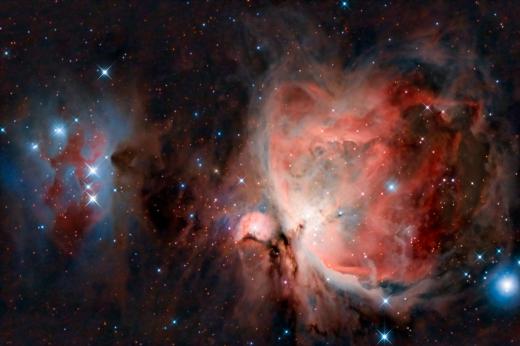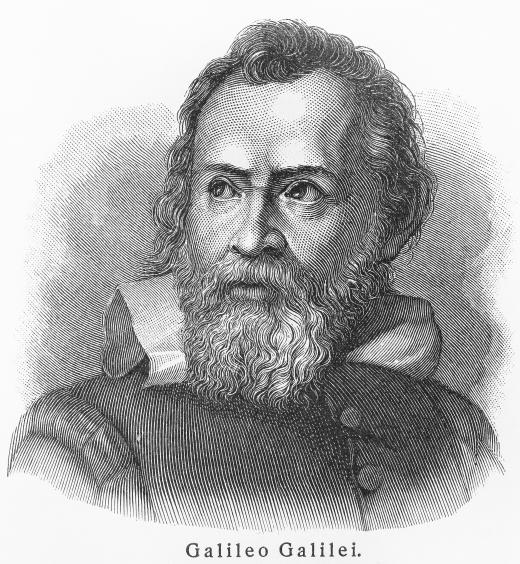What Is the Orion Nebula?
 Michael Anissimov
Michael Anissimov
The Orion Nebula is a diffuse nebula about 30 light-years in diameter located in the constellation Orion, beneath Orion's belt, 1,500 light years from the Earth. A diffuse nebula is so named because it trails off into space, is partially transparent, and lacks any well-defined boundaries. It is one of the brightest and most famous nebula in the night sky, also being one of the best studied. It is also known as M42 as a reference to its Messier number.
The Orion Nebula is part of a larger body called the Orion Molecular Cloud Complex, which is present throughout the entire constellation of Orion and contains other famous objects such as Barnard's Loop, the Horsehead Nebula, M43, M78 and the Flame Nebula. The nebula itself covers a 10° portion of the sky, about a tenth the size of the Moon's disc.

The Orion Nebula is a stellar nursery, and contains over 700 stars in various stages of formation. Being both an emission and a reflection nebula, it both contains stars that ionize the surrounding medium and molecular clouds that serve as "mirrors", reflecting light at the Earth. Emissions nebulae are referred to as "HII regions," in reference to the abundant ionized hydrogen gas that they contain. HII regions are also where we can find the birth of stars in objects called Bok globules, and the subsequent protoplanetary discs created around fledging suns. Some of the youngest stars in the Galaxy have been observed within the boundaries of the Orion nebula.

Although the Orion Nebula is visible with the naked eye, none of the ancient astronomers noted it, its discovery in 1610 attributed to Nicolas-Claude Fabri de Peiresc, a Jesuit astronomer. Even though Galileo Galilei used one of the earliest telescopes to observe the Orion constellation in detail that same year, he did not make note of it.
The Orion Nebula is the subject of the first astrophoto, taken by Henry Draper in 1865. This is acknowledged as the first time in history that deep-sky astrophotography was performed.
AS FEATURED ON:
AS FEATURED ON:












Discuss this Article
Post your comments